Recent Fire Damage Posts
How to Put Out a Grease Fire: Essential Steps to Ensure Your Safety
8/10/2023 (Permalink)
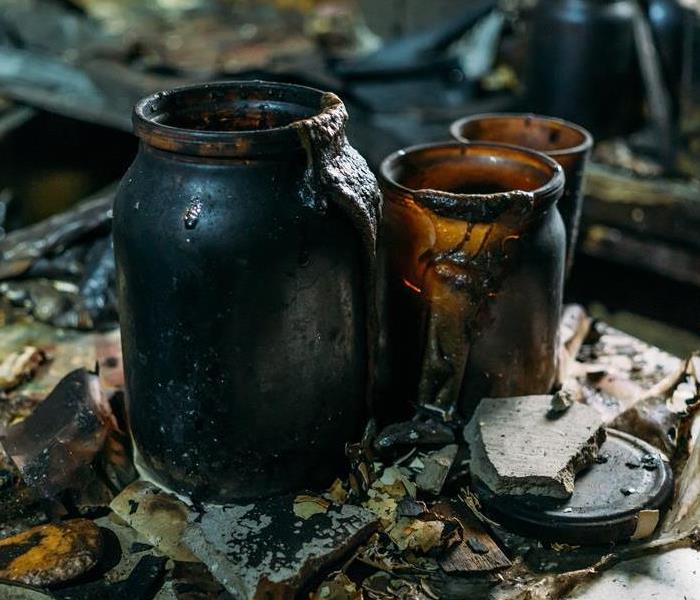 Safety first! Safety is top priority when it comes to grease fires.
Safety first! Safety is top priority when it comes to grease fires.
A grease fire can quickly escalate into a dangerous situation, posing a significant risk to life and property. It is crucial to know how to safely and effectively extinguish a grease fire to prevent it from spreading or causing further harm. In this blog post, we will guide you through the essential steps to put out a grease fire and ensure your safety.
Stay Calm and Act Quickly
The most important thing when dealing with a grease fire is to remain calm and act swiftly. Time is of the essence, and a fast response can help prevent the fire from intensifying. Avoid panicking or making impulsive decisions that could escalate the situation.
If it is safe to do so, immediately turn off the heat source. This could be a stovetop burner or an oven. Removing the heat will help stop the fire from spreading and minimize the fuel feeding the flames.
Smother the Flames
The next step is to smother the flames to restrict the oxygen supply. You can use a metal lid or a baking sheet to cover the burning pan. Make sure to use oven mitts or potholders to protect your hands while handling the lid. If it is safe, gently slide the lid over the pan, covering it entirely. Avoid lifting the lid to check if the fire is out; this can reignite the flames.
If you don't have a lid or it's not safe to use, you can try using baking soda or salt to extinguish the flames. Grab a generous amount of baking soda or salt and carefully sprinkle it onto the fire. These substances can help smother the fire by releasing carbon dioxide, which displaces oxygen. However, it is crucial to remember that water, flour, or other substances should never be used to extinguish a grease fire as they will only worsen the situation.
Use a Fire Extinguisher
If the grease fire continues to grow despite your efforts, it's time to utilize a fire extinguisher. Ensure that you have a Class B or multipurpose fire extinguisher suitable for grease fires. Remember the acronym "PASS" - Pull the pin, Aim at the base of the fire, Squeeze the handle, and Sweep the extinguisher side to side. Familiarize yourself with the instructions and proper usage of a fire extinguisher beforehand.
Water should never be used to extinguish a grease fire. Pouring water onto a grease fire can cause the burning oil to splatter, spreading the flames and increasing the risk of injury. Water can also cause an explosive reaction with hot oil, releasing steam and potentially causing severe burns.
Call for Emergency Assistance
If you are unable to extinguish the grease fire within a few seconds or if it continues to spread, do not hesitate to call emergency services. Inform them about the situation and provide your location. It is always better to have professional firefighters handle a fire to ensure that it does not escalate beyond control.
If the grease fire becomes uncontrollable, it is essential to prioritize your safety. If you are unable to extinguish the fire or if you are instructed to evacuate by emergency services, leave the area immediately. Alert others in the vicinity, close any doors behind you to contain the fire, and take the nearest and safest exit. Remember to stay low if there is smoke, cover your mouth with a cloth, and avoid inhaling toxic fumes.
Prevent future fires
Prevention is the key to avoiding grease fires altogether. Here are a few tips to help prevent future incidents:
- Never leave cooking unattended, especially when using hot oil or grease.
- Maintain a clean cooking area, removing any oil or grease spills promptly.
- Regularly inspect and clean cooking appliances, such as stovetops and ovens.
- Use caution when heating grease or oil, and never exceed the recommended temperature.
- Keep a fire extinguisher readily available in or near the kitchen, specifically designed for grease fires.
- Educate yourself and your family members on fire safety measures to ensure everyone knows how to respond in an emergency.
Remember, safety must always be the top priority when dealing with a grease fire. By following these essential steps and practicing preventative measures, you can effectively extinguish a grease fire and protect yourself, your loved ones, and your property. Stay calm, act quickly, and be prepared to handle these situations with confidence.
Creating an effective Office Escape Plan. A Step-by-Step Plan
4/5/2023 (Permalink)
 Having an office fire escape plan is an important part of a business
Having an office fire escape plan is an important part of a business
An office fire escape plan is an important part of any business, but it can be difficult to create one that's effective. This guide will walk you through the process of creating a plan for your own office, so that everyone knows what to do in case of an emergency.
The first step is to determine what type of building you work in and how many people are likely to be present when an emergency occurs.
If you work in an industrial warehouse or factory space with few employees on site at any given time, then there may only need to be one exit route from each floor or wing of your building (and perhaps even fewer).
On the other hand if there are hundreds or thousands of workers coming into work every day who might all need access through one main entrance point (such as an airport), then it's important that there are multiple ways out--even if they're not all accessible at once due simply because there aren't enough exits available!
Identify Potential Fire Hazards
Identify potential fire hazards in your office. This means inspecting the office for items that could cause a fire or make it difficult to escape, such as overloaded electrical outlets, frayed wires and combustible materials.
Create an Emergency Evacuation Plan
Designate an evacuation route.
Assign roles and responsibilities to key employees, such as the person who will be responsible for evacuating your pets or children from the building. If you have a large office building, consider having someone stationed at each floor's exit to direct people out of the building.
Provide fire safety training to all employees so they know what to do in case of emergency and how best to help others escape safely.
In case of a fire, it's important to know who to call and how to reach them. Post the phone number for your local fire department and other emergency services on your office wall or bulletin board, along with any other relevant details (e.g., whether they're open 24/7).
If you have an evacuation plan in place, include instructions on how employees should exit the building and where they should meet up once they're outside of it. This information should also be posted somewhere visible so everyone knows what they're supposed to do in case of an emergency situation--and where they need go afterward!
Test Your Plan
Conduct a fire drill to test the evacuation plan and make sure everyone is aware of the procedures. Review your plan with new employees, interns and students as they arrive on campus.
Install Smoke Detectors and Fire Extinguishers
Install smoke detectors and fire extinguishers in the office. Check them regularly to make sure they are in working order.
When you're working in an office, it's easy to forget how much flammable material is around. You might have paint, cleaning supplies and other items that are highly combustible. These can be stored safely by storing them away from heat sources and keeping them in approved containers. This will prevent fires from starting accidentally and make it easier for everyone if there is an emergency evacuation needed. As you can see, creating an office fire escape plan is not as hard as it may seem. It only takes a few minutes and can save lives in the event of a fire.
If you have any questions or concerns about how to create your own office fire escape plan, please contact us anytime, 24/7. We are here to help!
Fire Protection Tips for Your Valuables
12/6/2022 (Permalink)
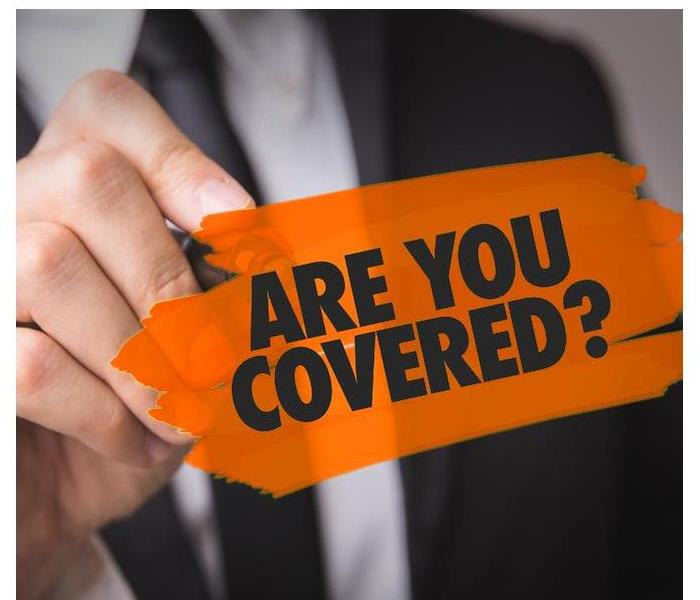 If you’re serious about protecting your valuables from fire damage, you need to consider insurance.
If you’re serious about protecting your valuables from fire damage, you need to consider insurance.
Fire Protection Tips for Your Valuables
Fires are scary and can happen at any time without warning. Fire damage is also very costly. If your home has been damaged by fire, you may be wondering what you can do to prevent it from happening again. Thankfully, there are several things that both homeowners and renters can do to protect their valuables from the damaging effects of fire, and they don’t have to be expensive or difficult!
More Than Insurance
If you’re serious about protecting your valuables from fire damage, you need to consider insurance. You should make sure that your insurance policy is up-to-date and includes what it needs to in order to cover the right kinds of damages. If not, talk with your broker or agent about adding coverage for specific items or situations (like fires).
You should absolutely invest in proper insurance to protect your home and valuables from potential fire damage. If a fire does occur, it's easy to think that you're going to need everything replaced right away. But often, experts recommend waiting until the smoke clears before making any big purchases. Insurance provides you with time to think about what items are truly important for you, and which ones can wait until later on down the line when things have settled down a bit.
Fireproof Storage
A fireproof safe can keep your valuables safe from the heat of a fire. Fireproof storage containers are another option for protecting your belongings from the heat of a fire. These containers come in many shapes and sizes, so you can choose one that fits your needs best.
Fireproof storage cabinets are another great choice if you're looking for protection against extreme temperatures. They provide an extra layer of protection in case there's an emergency evacuation.
If storing small items is more important than hiding larger ones, then look into getting some fireproof boxes instead! These boxes are small enough not only to fit on shelves but also under beds and nightstands so they won't be too noticeable but still provide valuable protection against disasters like floods that might cause water damage inside homes due all sorts things like leaks coming through windows/doors etcetera.
Choosing a Security C.
Another way to help protect your valuables from a fire is to work with a reputable security company that can alert you when a fire breaks out in your home. When you’re looking for a security company, it’s important to choose one that offers a variety of services—including home alarm systems, fire alarms and sprinkler systems. Make sure the company has been in business for at least five years and has at least three references from satisfied customers. Ask about their history and reputation as well as their customer service record. If there are any complaints against them, ask how they handled them. Also ask what kind of warranty the system will come with (some companies offer lifetime warranties).
You can prevent most fire damage by taking precautions and insuring your valuables.
The best way to prevent fire damage is by taking the proper precautions. If you take the time to purchase a few basic fire-prevention tools, they’ll pay off in the long run and can help you save money on insurance costs. The most important thing is to know what your valuables are worth, so you can make informed decisions about how best to protect them from potential fires.
Fireproof safes are a good option for protecting valuables because they offer multiple layers of protection through heavy-duty steel construction, high-tech insulation materials, and some models even offer reinforced walls that won't melt when exposed to heat sources like fires or ovens. These safes also have burglar alarms installed within them so that if someone tries breaking into one while it's closed up tight then they'll trigger an alarm at once! You never have to worry about anyone stealing anything since no one else knows where they're hidden away except yourself -- plus there won't be any smoke damage either since all these items have been stored safely inside without being exposed directly outside elements such as sunlight
We want you to be prepared for all types of fires by reading this article and being aware of the steps that you can take to protect your valuables. Your home is one of your biggest investments and we want it to last as long as possible. So start planning now!
Insurance Covers Damage from Neighboring Buildings
7/27/2022 (Permalink)
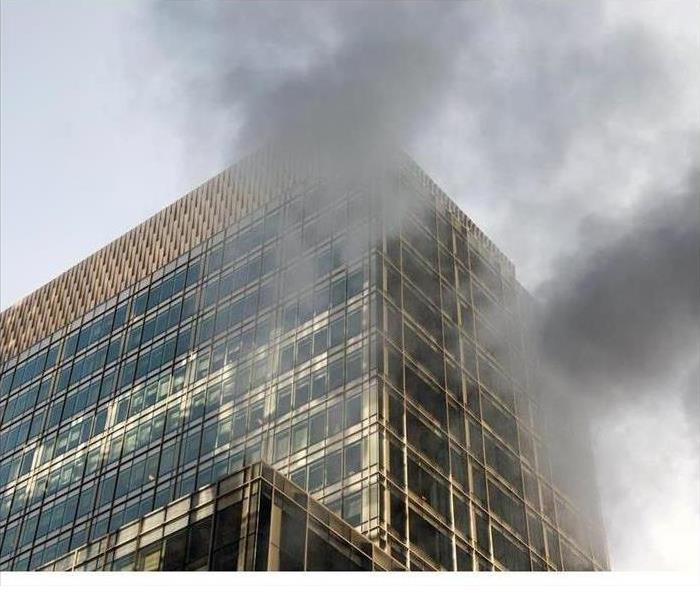 Smoke damage from a building in Gooding, CO
Smoke damage from a building in Gooding, CO
Insurance Covers Damage from Neighboring Buildings
Being prepared for anything is important to the success of your Gooding, CO, business. Even if you have developed a fire and storm evacuation plan, conduct regular maintenance and inspections, adhere to city codes, and maintain proper insurance, the unexpected can still happen. If a neighboring building catches on fire and your structure is affected by smoke damage, that preparation will go a long way.
Insurance Coverage
Whether the soot damage and smoke odor are minimal or severe, commercial property insurance will cover the damage. After the incident happens, immediately contact your insurer. Vital information to provide and questions to ask include:
- Date
- Location
- Details regarding the extent of damage
- Replacement and restoration options
- Timeline for repairs
- Options if temporary closure is needed
It is also important to document all the damage by taking videos and photos, as well as obtaining receipts for valuable items. If the damage is severe enough to require shutting down for a period of time, keep track of all expenses associated with the closure.
Professional Cleaning
Even if your building is minimally affected, soot and smoke damage is often difficult to clean. Soot can be dry or oil, the latter of which smears and can increase frustration. If not done properly, foul odors will linger long after repairs are made. To ensure your building is back to normal, fire damage and restoration professionals can handle all the needed repairs and restoration, as well as smoke cleaning services. With expertise and technology on their side, they can eradicate visible and hidden damage.
While the soot may be visible, smoke residue isn’t always noticeable. A certified professional uses various hard-surface cleaning techniques and air filtration devices to clean objects and the air.
Smoke damage can be a tricky problem to deal with. Regardless if the fire was in your building or an adjacent one, get help that is Faster to Any Size Disaster to eliminate any long-term effects.
5 Tips for Filing a Commercial Fire Claim
5/9/2022 (Permalink)
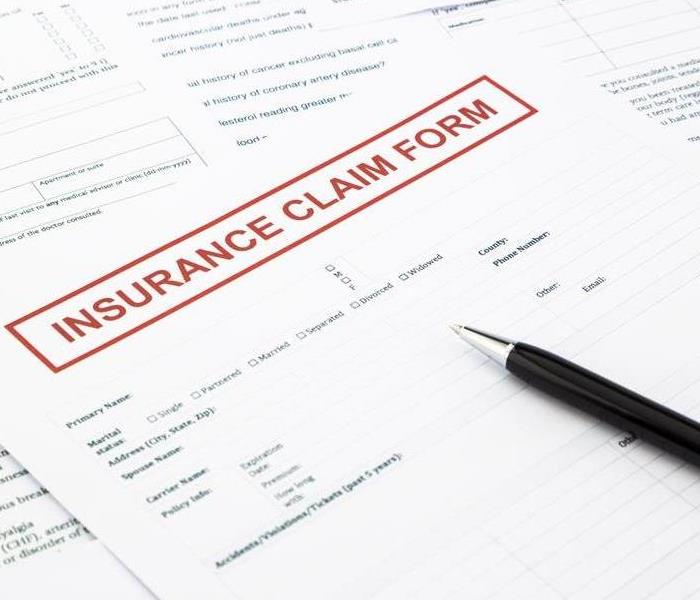 Fires and the methods used to extinguish the flames create holes in the structure, exposing the property to trespassers, critters and natural elements
Fires and the methods used to extinguish the flames create holes in the structure, exposing the property to trespassers, critters and natural elements
5 Points To Consider When Filing A Commercial Fire Claim
When fire ravages part of a company's building, owners may turn to insurance for financial assistance. Along with the organization's adjuster, the agent reviews a fire claim, determining whether the blaze's cause falls under the policy. During this process, owners should remain active, following these five steps to minimize obstacles and delays.
1. Get Experts To Secure the Premises
Fires and the methods used to extinguish the flames create holes in the structure, exposing the property to trespassers, critters and natural elements. Seek assistance from a fire restoration company in Boulder, CO, to defend the location from further harm. These professionals assess the grounds, tarp the roof and board up walls and windows.
2. Contact Your Local Agent
Insurance companies have several methods of contact. Reach an agent via phone, mobile application or website. Initiate the claim immediately. This effort demonstrates good faith and reduces concerns that lingering action created more harm to the property.
3. Collect Documentation To Support the Fire Claim
Prove the value of your building and the materials. Locate paperwork that verifies the cost of the monthly rent and utilities. Find the amount for repair parts and replacement. In addition, put together a portfolio of any financial papers that document the cost to replace lost contents.
4. Gather Images of the Fire Damage
Provide visual evidence of destruction. Use a camera to snap photographs of anything ruined by smoke, sparks or water. Include the structure as well as valuable content. Send these to the assigned agent, validating the inventory record.
5. Collaborate With the Insurance Adjuster
The agency may send its adjuster to examine the facility. During the inspection, walk with the professional, pointing out areas of concern. Have a list of questions and concerns to share with the assessor.
Business owners in Boulder, CO, can seek financial aid from an insurance carrier. When filing a fire claim, remain part of the conversation, providing valuable information and documentation to help expedite the process and minimize setbacks.
3 Steps for Fixing a Beeping Smoke Detector
4/7/2022 (Permalink)
 If your unit was installed during a previous fire in your home, it may have smoke damage to its internal parts.
If your unit was installed during a previous fire in your home, it may have smoke damage to its internal parts.
How To Repair A Beeping Smoke Detector In 3 Easy Steps
Protecting your Erie, CO, home and family from a fire with smoke detectors is a simple and cost-effective safety measure. You can install these devices on every floor, the presence of a fire alarm in each location might give you peace of mind each time you leave your home or go to sleep at night. However, if you notice one or more of your alarms chirping or beeping, it may need maintenance and there are a few steps you can take to resolve the problem.
1. Check the Battery
Your smoke alarm cannot protect your home from fire damage if the battery is not allowing it to function correctly. If the unit is beeping every few minutes, open the battery compartment and check the battery's connection. If it does not appear loose, then you may need to change the battery. A good rule of thumb is to change and check the alarm every fall and spring during the time change.
2. Inspect Your Thermostat
Environmental changes may cause your fire alarm to beep unexpectedly. If this happens and you know the battery is not the problem, then check your thermostat to ensure the room is not too humid. If this is a problem, use a ceiling or floor fan to lower the condensation levels. Opening windows during humid weather can also help.
3. Check for Internal Damage
If your unit was installed during a previous fire in your home, it may have smoke damage to its internal parts. A fire damage and restoration service can help you decide whether you need new smoke detectors installed and assist you with other fire prevention measures as well, such as checking your home for potential fire hazards and formulating an evacuation plan.
Having a working fire alarm in your Erie, CO, home can help you feel confident that your family is well protected. Scheduling regular maintenance for each unit in your home at least twice a year may prevent malfunction and the kind of serious damage that house fires cause.
Four Things to Do After a Fire
2/4/2022 (Permalink)
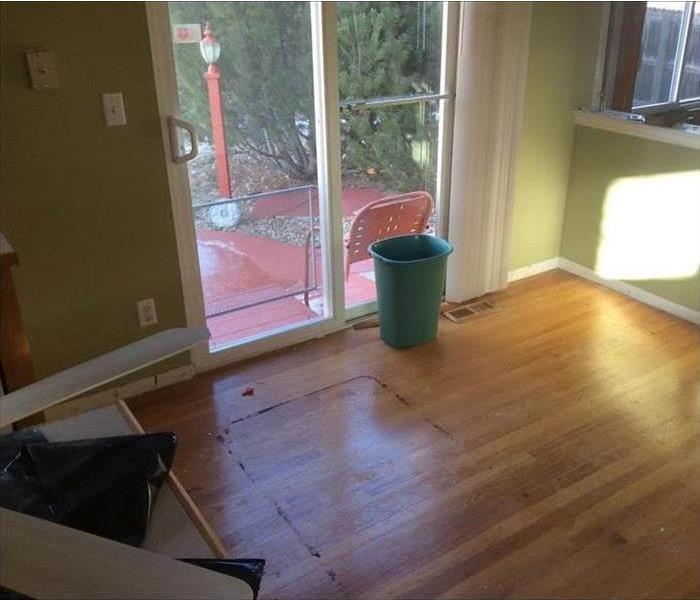 Our team at SERVPRO of Lafayette/Louisville are trained to restore and remediate after fire damage. We clear the affected area and sanitize your home.
Our team at SERVPRO of Lafayette/Louisville are trained to restore and remediate after fire damage. We clear the affected area and sanitize your home.
After A Fire, There Are Four Things You Should Do.
Being the victim of a fire in Superior, CO can be devastating. First the flames hit, then came the fire hoses, and now you are looking at your home and possessions with questions: what do I do now, who do I call and what is fire restoration. Here are four things to think about once you are faced with soot, smoke and damage cleaning.
1. Don't Spread the Debris
Try to minimize how much you move around the damaged areas once you return to your home. The more you move around your rooms, the more soot particles attach to your hands and shoes. When you move from a damaged room to an untouched room you can track the debris into a previously clean room.
2. Remove Damaged Items Safely
Start the fire restoration process by removing damaged items. Objects with soot or smoke damage, such as dishes, books and artwork, can be easily removed. However, some items can be harder to move because they've become water logged. Rugs, sofas and carpeting can be deceptively heavy and should be carefully withdrawn.
3. Get the Soot Out
Soot, the fine particulate matter that can land on every surface, needs to be completely removed to mitigate both its impact and potential for future damage. Flat surfaces are the most visible places for soot to land, but it can also end up on vertical blinds, light bulbs and porous air filters.
4. Don't Try to Wash It Away
Electrical appliances need to be assessed for damage before they get cleaned. Likewise, upholstery, woodwork and painted surfaces should be cleaned by professionals who know the right cleansers for each surface. You want to ensure that both fire and smoke damage are addressed during cleanup.
A fire can be a devastating catastrophe in Superior, CO if you don't know the fire restoration process. Following a few simple steps can make that process much easier.
Don’t Throw It Out: Content Cleaning After a Fire
2/1/2022 (Permalink)
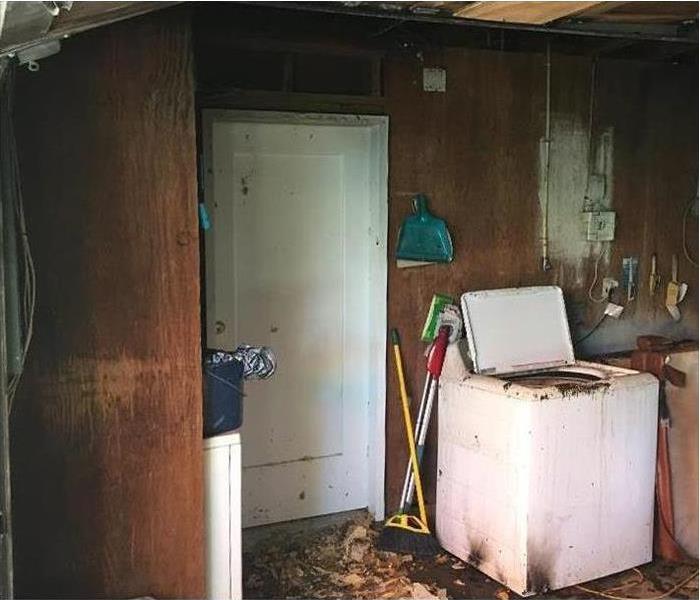 The fire damaged some items in this garage. SERVPRO was able to make an efficient cleanup of the burnt items and the deodorizing of the affected area.
The fire damaged some items in this garage. SERVPRO was able to make an efficient cleanup of the burnt items and the deodorizing of the affected area.
Content Cleaning After A Fire: Don't Throw It Out
Don’t throw it out! Did you know that many of your personal belongings may be saved after a disaster? If you have had a fire in your home in Niwot, CO, damage may include smoke, soot, water or mold. Disaster mitigation companies offer content cleaning because they know you value saving money and they know that some belongings that hold a deeper meaning to your family.
When It Can’t Be Scrubbed
You know some things can be scrubbed with or abrasives or immersed in water, but what about the things that can’t? Here are some ways that specialists can help save your items.
• Dry-Cleaning. This is a great method for removing soil and odors from fabric and clothing.
• Cavitation. This is an ultrasonic method for cleaning soot and smoke from the nooks and crannies of non-porous items such as, jewelry, records, glasses, and kitchenware.
• Foam Cleaning. When items are too big to pack off for dry-cleaning, foam cleaning can help. This is great for cleaning upholstered items, like sofas, chairs, and mattresses.
• Electronics Cleaning. Soot and smoke can cause corrosion of metal inside your electronic items. This can lead to failure and safety issues. Specialists may be able to clean your electronics by taking them apart and carefully removing the soot from all surfaces.
• Document Saving. Sometimes documents can’t be fully restored, but professionals have many ways to ensure the documents are completely dry to prevent further damage.
Removal and Storage
The right company can offer you climate-controlled storage of your personal belongings to further prevent damage of items during the home restoration stage. Content storage also enables the experts to focus on cleaning methods for each of your personal belongings, which are documented in great detail, including photo and description.
So, don’t be hasty to throw out items since dry-cleaning and other techniques can be used to help save your belongings. When you work with a professional fire mitigation company, they will guide you through the process of what can be saved and what must be trashed.
Fire and Smoke Damage: Replacing Money
1/3/2022 (Permalink)
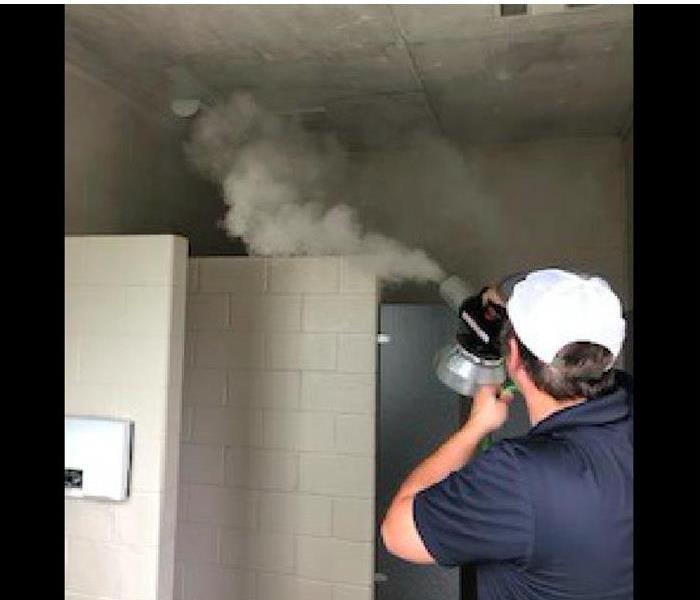 If your home or business suffers soot and smoke damage after a fire, give SERVPRO a call. Our team of fire damage experts will restore it efficiently.
If your home or business suffers soot and smoke damage after a fire, give SERVPRO a call. Our team of fire damage experts will restore it efficiently.
Money To Replace After A Fire Or Smoke Damage
When most people think of smoke damage, they typically think of structural damage or even damage to artwork and other material goods. However, how often do they consider currency? Money is often damaged in fires, and people are often left confused about how to handle replacement. Unfortunately, some may even chalk it up as a lost cause. Fortunately, money can be replaced when damaged but you need to have evidence of the damage.
1. Preserving Damaged Bills
In order to present evidence, you need to preserve the money. You should first take a picture of the money in the location it was damaged. Then, you can try to wrap each bill in plastic wrap to mitigate any further damage.
2. Exchanging at a Federal Reserve Bank
As smoke damage can lead to irreversible damage and even the inability to read the value of the bill, you should exchange any damaged money. However, you cannot trade the bills at any bank. You will need to find your regional Federal Reserve Bank or mail the bills to the Bureau of Engraving and Printing.
3. Handling Damaged or Melted Coins
While most soot damage can be cleaned from coins, some coins may have melted or been damaged in the fire. Again, you will need to replace these at your regional Federal Reserve Bank, or you can mail coins to the U.S. Mint.
4. Calling for Assistance
As a specialist in smoke cleaning, a fire remediation specialist in the Louisville, CO, area may be able to help you find numbers and details of damaged money experts. You can also reach out to your regional Federal Reserve Bank or contact the Department of the Treasury directly.
Fire and smoke damage can leave money unusable. Fortunately, you can replace marred currency through the appropriate channels, as long as you have the bills or coins to prove the damage.






 24/7 Emergency Service
24/7 Emergency Service







